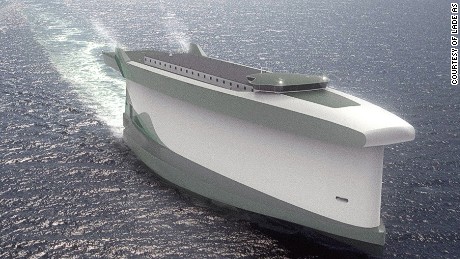
في حين انها شكل من أشكال النقل قليل منا يرى سفن الشحن كحزمة ملوثة للبيئة.
وفقا لدراسة حديثة، وحسابات الشحن لحوالي 3٪ من انبعاثات ثنائي أكسيد الكربون العالمية. من المستغرب ليس عندما تفكر في أن محركات يقدر ب 90،000 لسفن الشحن في العالم هي في تستخدام 24 ساعة في اليوم أثناء السفر.
مفاهيم مستقبلية لسفن الحاويات والمدعومة من مجموعة الطاقة البديلة كمراوح طاحونة تعمل على ضفاف الأشرعة المعدنية العمودية. على الرغم من أن معظمها لا يزال على لوحة الرسم، الا أن مفهوم واحد هو البداية ليتم عرضه على محمل الجد من قبل صناع الشحن.
وفقا لدراسة حديثة، وحسابات الشحن لحوالي 3٪ من انبعاثات ثنائي أكسيد الكربون العالمية. من المستغرب ليس عندما تفكر في أن محركات يقدر ب 90،000 لسفن الشحن في العالم هي في تستخدام 24 ساعة في اليوم أثناء السفر.
مفاهيم مستقبلية لسفن الحاويات والمدعومة من مجموعة الطاقة البديلة كمراوح طاحونة تعمل على ضفاف الأشرعة المعدنية العمودية. على الرغم من أن معظمها لا يزال على لوحة الرسم، الا أن مفهوم واحد هو البداية ليتم عرضه على محمل الجد من قبل صناع الشحن.
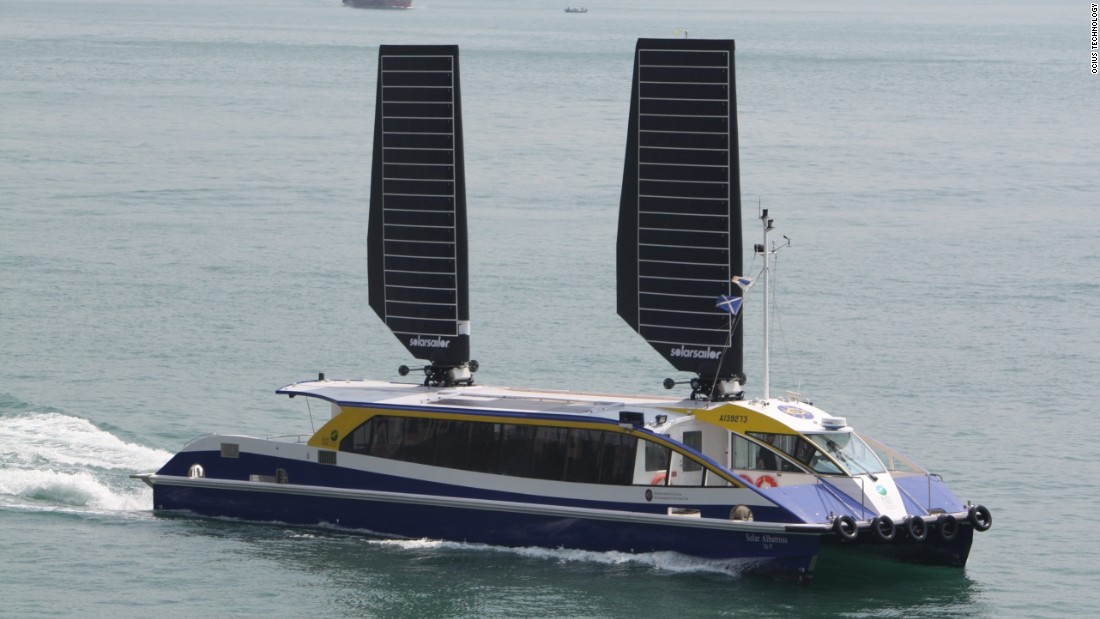
تصميم الجنيح
تسمى "فيندسكيب،" تصميم نرويجي يستخدم الجانبين العلويين من سفن الحاويات بصفتها أشرعة، ويحول طاقة السفينة بأكملها في الجنيح بمساعدة الرياح.
صممت بواسطة ليا أس لاد، وتقول الشركة ومقرها أوسلو للسفن التجارية المختلطة - والتي لا تزال لديها محركات تعمل بالغاز الطبيعي المسال - أنه يمكن تحقيق وفورات في استهلاك الوقود من 60٪ وخفض الانبعاثات بنسبة 80٪.
انها من بنات أفكار تيري أس اليه لاد، الذين استخدموا مهاراته كبحار لسرعة تطوير تصميمه الهوائي. ويقول إن سفينة الحاويات المستقبلية تعمل أشبه بطائرة من السفينة الشراعية التقليدية.
وقال: "في عصر كريستوفر كولومبوس، على سبيل المثال، لكان قد استخدم ما أصبح يعرف باسم الرياح الدافعة ولكن سفينته التجارية مختلفة تماما عن فيندسكيب لأنه كان يمكن أن تبحر مع الريح - وأنه لا يمكن أن تبحر في الرياح".

"فيندسكيب" يمكنك أن تبحر بها تقريبا في مهب الريح، وبهذه الطريقة تحس انها أشبه بطائرة.
"واستخدام الرياح واضح، أو الرياح الشراعية، لتوليد سحب بأقصى قدر بنفس الطريقة التي سوف تقلع بها الطائرة عندما تصل إلى سرعة معينة."
سوف تكون السينة قادرة على الابحار من نقطة عالية مثل 18 درجة في مهب الريح، الفراغ الناجم على الجانبين في السفينة (الجانب محمي من الرياح) ما يكفي لدفع السفينة إلى الأمام.
أجهزة الكمبيوتر مهمة
هى حاسمة بالنسبة للتصميم . فهو برنامج الكمبيوتر الذىى يجري تطويره من قبل مركز فراونهوفر الألماني للنقل والإمداد والخدمات البحرية، الذي يحسب الطريق الأمثل الإبحار على أساس الطقس والرياح القادمة.
"واستخدام الرياح واضح، أو الرياح الشراعية، لتوليد سحب بأقصى قدر بنفس الطريقة التي سوف تقلع بها الطائرة عندما تصل إلى سرعة معينة."
سوف تكون السينة قادرة على الابحار من نقطة عالية مثل 18 درجة في مهب الريح، الفراغ الناجم على الجانبين في السفينة (الجانب محمي من الرياح) ما يكفي لدفع السفينة إلى الأمام.
أجهزة الكمبيوتر مهمة
هى حاسمة بالنسبة للتصميم . فهو برنامج الكمبيوتر الذىى يجري تطويره من قبل مركز فراونهوفر الألماني للنقل والإمداد والخدمات البحرية، الذي يحسب الطريق الأمثل الإبحار على أساس الطقس والرياح القادمة.
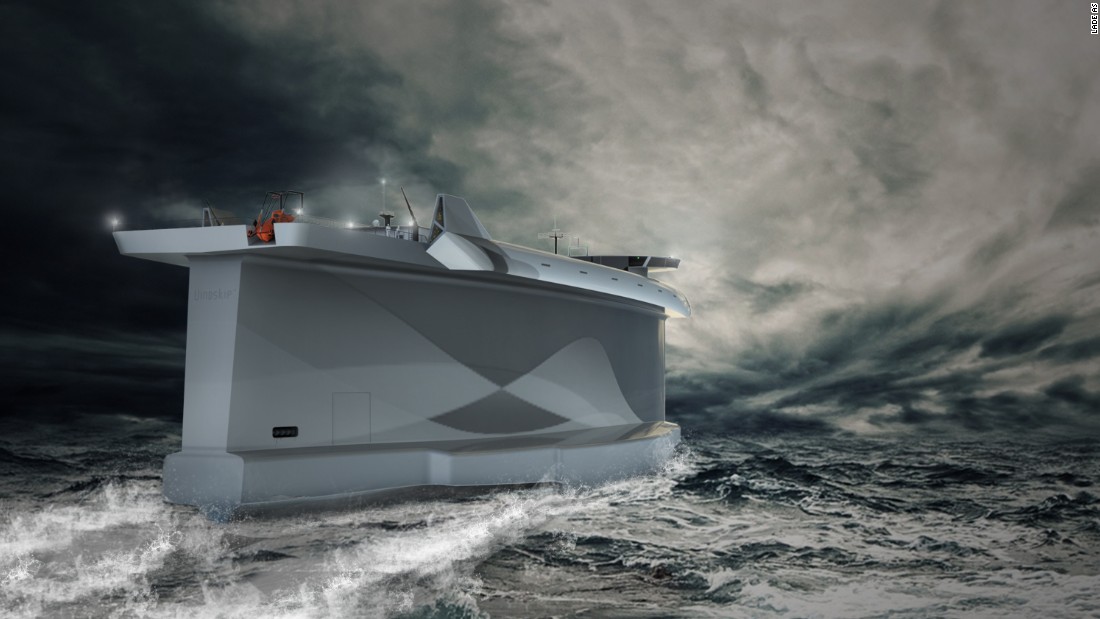
"مع هذا البرنامج، يمكنك إدخال ما تريد وأن تترك الى أين تريد أن تصل، يتم تحميل توقعات الطقس في البرنامج وبعد ذلك بحساب أفضل مسار"، وقال كما قال لاد.
"وهكذا سيتم تحديثها ديناميكيا في كل يوم وفي كل إحداثية بانها تحقق مع وصول الوقت ووفرة للطاقم سواء لتسريع استخدام محركات أو إبطاءها، بل يجعل من السهل للغاية الابحار بالنسبة للطاقم."
خوارزميات في البرنامج أيضا لحساب أفضل زاوية للريح للحصول على أقصى قدر من الأداء و التصميم.
"مع التوجيه للطقس لدينا وحدة نمطية يمكنها احتساب أفضل طريق من أجل أن تستهلك وقود بأقل قدر ممكن. كما يتم نتيجة ذلك تخفيض التكاليف. بعد كل شيء، وتمثل السطح (سفينة زيت الوقود) بنفقاتها الجزء الأكبر من إجمالي التكاليف في صناعة النقل البحري "، كما قالت لورا الثر، الباحث في سى ام ال في هامبورغ.
"وهكذا سيتم تحديثها ديناميكيا في كل يوم وفي كل إحداثية بانها تحقق مع وصول الوقت ووفرة للطاقم سواء لتسريع استخدام محركات أو إبطاءها، بل يجعل من السهل للغاية الابحار بالنسبة للطاقم."
خوارزميات في البرنامج أيضا لحساب أفضل زاوية للريح للحصول على أقصى قدر من الأداء و التصميم.
"مع التوجيه للطقس لدينا وحدة نمطية يمكنها احتساب أفضل طريق من أجل أن تستهلك وقود بأقل قدر ممكن. كما يتم نتيجة ذلك تخفيض التكاليف. بعد كل شيء، وتمثل السطح (سفينة زيت الوقود) بنفقاتها الجزء الأكبر من إجمالي التكاليف في صناعة النقل البحري "، كما قالت لورا الثر، الباحث في سى ام ال في هامبورغ.
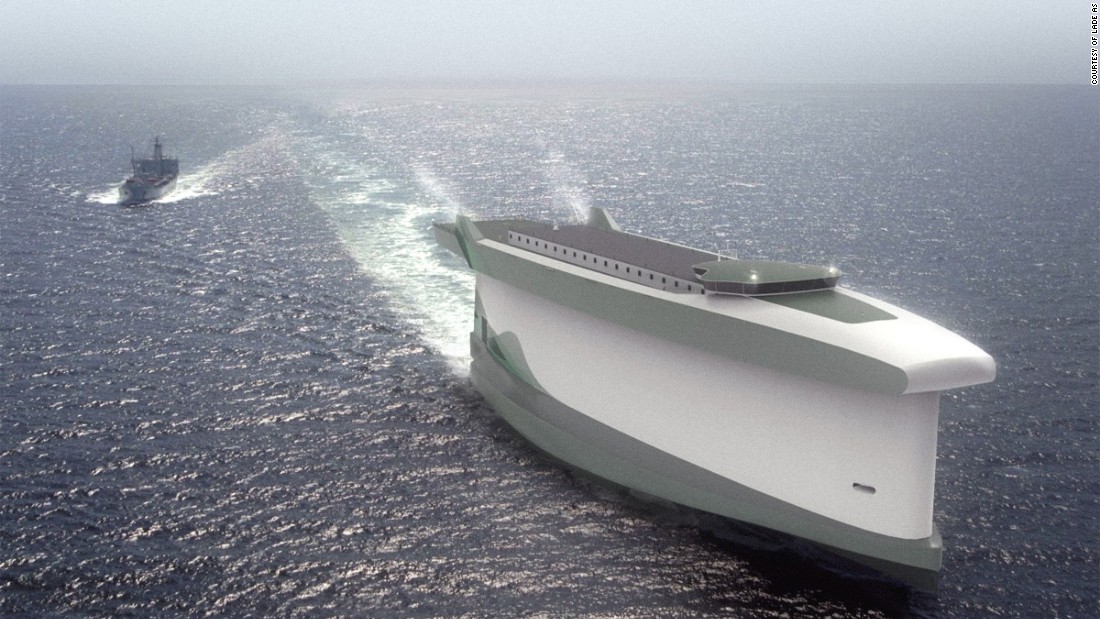
الكبريت - المغير اللعبة
يتم تعيين تغييرات في اللوائح في محتوى الكبريت من الوقود الثقيل البحري لجعل سعر وقود السفن - عادة بين أثقل وأقذر الوقود في عملية التقطير - الأكثر تكلفة.
الشاحنين يفضلون تقليديا وقود السفن الملوث المتبقي لأنه كان رخيص، مع السفن الكبيرة ذات مساحة لنقل سخانات تعتبر لازمة لجعل الوقود صعب الاحتراق.
ولكن كل ذلك على وشك أن يتغير.
اللوائح الدولية الراهنة تبين قبعة محتوى الكبريت بنسبة 3.5٪ ولكن من المتوقع أن تنخفض إلى 0.5٪ بحلول عام 2020 .
"هذا يجعل الأمور مثيرة جدا"، كما قال لاد. "ليست هناك العديد من الحلول الجيدة لهذا، وفي اللحظة التي يمكن غسل العادم مع أجهزة غسل الغاز ولكن على السفن الكبيرة وهذا هو معقد جدا ومكلف للغاية".
يتم تعيين تغييرات في اللوائح في محتوى الكبريت من الوقود الثقيل البحري لجعل سعر وقود السفن - عادة بين أثقل وأقذر الوقود في عملية التقطير - الأكثر تكلفة.
الشاحنين يفضلون تقليديا وقود السفن الملوث المتبقي لأنه كان رخيص، مع السفن الكبيرة ذات مساحة لنقل سخانات تعتبر لازمة لجعل الوقود صعب الاحتراق.
ولكن كل ذلك على وشك أن يتغير.
اللوائح الدولية الراهنة تبين قبعة محتوى الكبريت بنسبة 3.5٪ ولكن من المتوقع أن تنخفض إلى 0.5٪ بحلول عام 2020 .
"هذا يجعل الأمور مثيرة جدا"، كما قال لاد. "ليست هناك العديد من الحلول الجيدة لهذا، وفي اللحظة التي يمكن غسل العادم مع أجهزة غسل الغاز ولكن على السفن الكبيرة وهذا هو معقد جدا ومكلف للغاية".
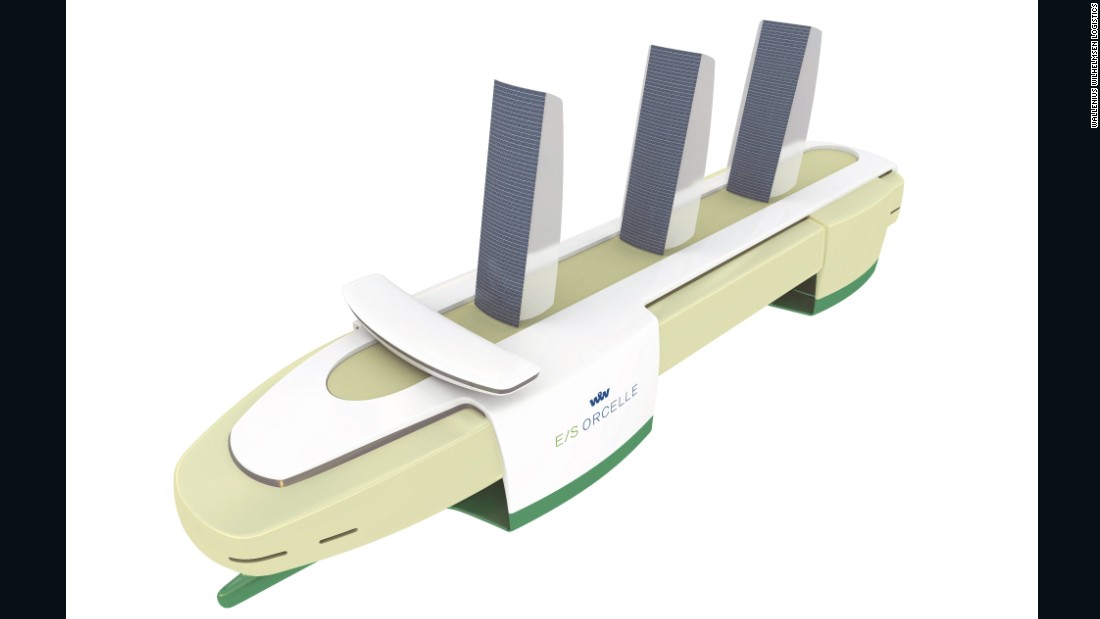
"هذا هو المكان الذي تأتي" فيندسكيب " فيه - نظرية لانخفاض استهلاك الوقود فيمكن تشغيلها على الغاز الطبيعي المسال الذي يعني عدم وجود الكبريت على الإطلاق."
واحدة من أكبر مالكي السفن في النرويج، ويلهمسن، دخلت بالفعل المشروع على أساس تقني و، في حين كان اس اليه واثق بهدوء من أول فيندسكيب في العالم ينزلق إلى المياه بحلول عام 2019، ويقول: ان صناعة النقل البحري العالمية كانت بطيئة في الرد على تصميمه .
"(لكن) القوة الدافعة الكبيرة في المشروع فيندسكيب سوف تعدل هذه اللوائح الجديدة على مستويات الكبريت"، كما قال لاد.
واضاف ان "مشكلة كبيرة مع الكبريت هو أنه من الخواص الحمضية البحرية وهذا يعني أن الجمبري وسرطان البحر لا يمكن أن تشكل أصدافها" كما قال اس اليه ، مضيفا أنه تحمضى وقد يؤثر على النظام البيئي البحري بأكمله. "انها سيئة جدا ولكنه شيء لابد من القيام به -. انها لا يمكن ان تستمر على هذا النحو."
واحدة من أكبر مالكي السفن في النرويج، ويلهمسن، دخلت بالفعل المشروع على أساس تقني و، في حين كان اس اليه واثق بهدوء من أول فيندسكيب في العالم ينزلق إلى المياه بحلول عام 2019، ويقول: ان صناعة النقل البحري العالمية كانت بطيئة في الرد على تصميمه .
"(لكن) القوة الدافعة الكبيرة في المشروع فيندسكيب سوف تعدل هذه اللوائح الجديدة على مستويات الكبريت"، كما قال لاد.
واضاف ان "مشكلة كبيرة مع الكبريت هو أنه من الخواص الحمضية البحرية وهذا يعني أن الجمبري وسرطان البحر لا يمكن أن تشكل أصدافها" كما قال اس اليه ، مضيفا أنه تحمضى وقد يؤثر على النظام البيئي البحري بأكمله. "انها سيئة جدا ولكنه شيء لابد من القيام به -. انها لا يمكن ان تستمر على هذا النحو."
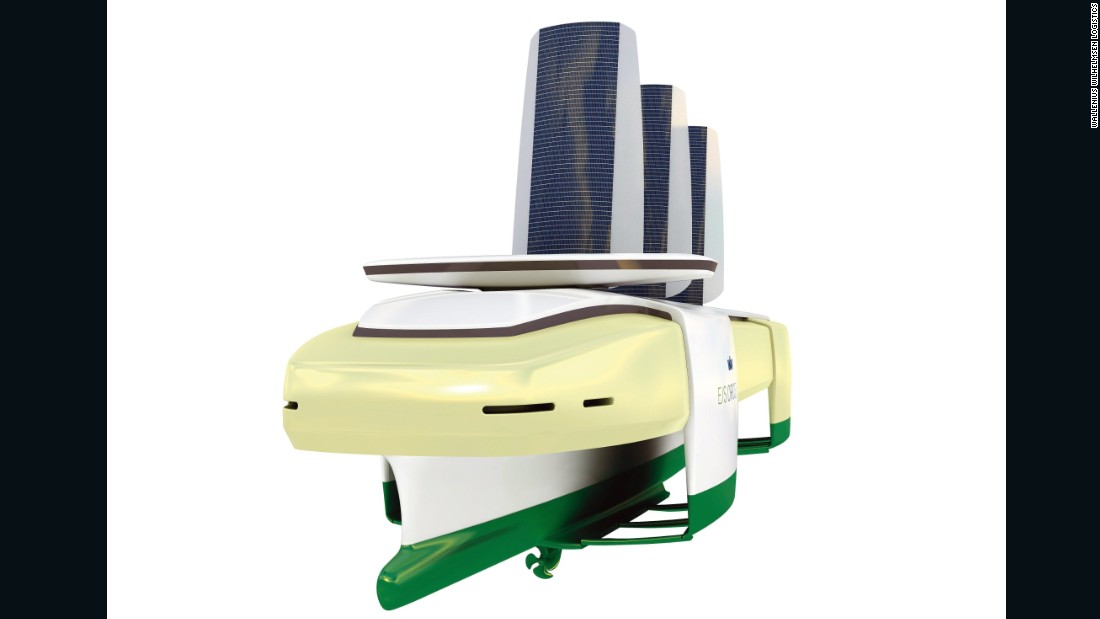
قال الخط الملاحي ميرسك الدنماركي أنه تم متابعة الابتكارات في مجال كفاءة الطاقة كحل "هنا والآن".
"بشكل عام، فإننا لا نعتقد أن التصاميم بمساعدة الرياح سوف تلعب أي دور كبير في صناعة شحن الحاويات في المستقبل المنظور"، وقال رئيس شركة ميرسك للاستدامة سيغنه بروون جنسن.
"لا تزال غير واثقين من تلك التكنولوجيا على النطاق تجاري والتشغيلي على حد سواء."
وقالت إن ميرسك قامت بتطوير السفن الأليكترونية الثلاثية- كسفنها التي تستخدم محركات الضخ الدافع الدوار الطويل جدا والفعال بشكل سفينة وأنظمتها المتطورة لاسترداد الحرارة المفقودة لتحسين كفاءة ثانى أكسيد الكربون بنسبة 50٪ للحاوية الواحدة.
"بشكل عام، فإننا لا نعتقد أن التصاميم بمساعدة الرياح سوف تلعب أي دور كبير في صناعة شحن الحاويات في المستقبل المنظور"، وقال رئيس شركة ميرسك للاستدامة سيغنه بروون جنسن.
"لا تزال غير واثقين من تلك التكنولوجيا على النطاق تجاري والتشغيلي على حد سواء."
وقالت إن ميرسك قامت بتطوير السفن الأليكترونية الثلاثية- كسفنها التي تستخدم محركات الضخ الدافع الدوار الطويل جدا والفعال بشكل سفينة وأنظمتها المتطورة لاسترداد الحرارة المفقودة لتحسين كفاءة ثانى أكسيد الكربون بنسبة 50٪ للحاوية الواحدة.
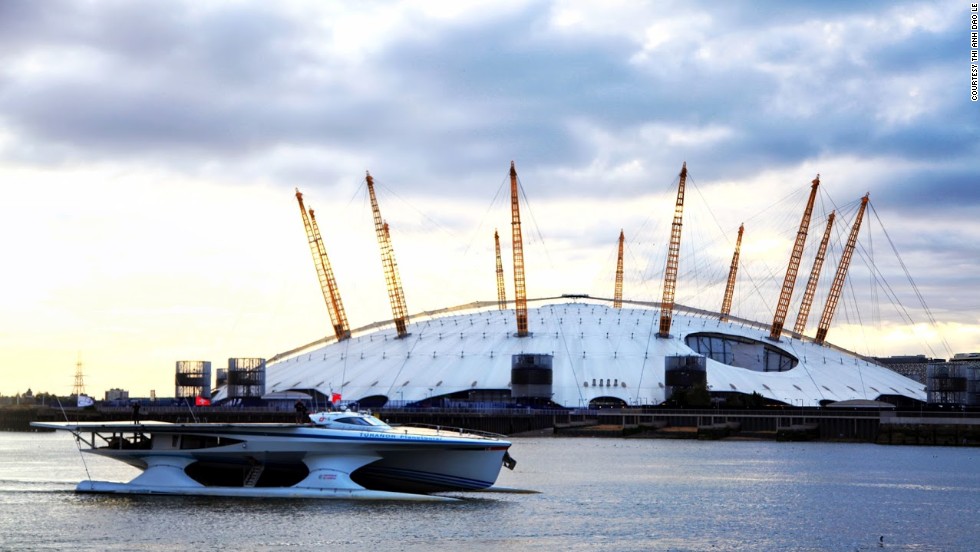
واضاف "اذا نظرتم الى التقنية على متن سفننا اليوم، فانها بالفعل ملحوظة لأي مدى وصلنا"، كما قال.
While it's a form of transport few of us see, shipping packs a punch as a polluter.
According to a recent study, shipping accounts for around 3% of global CO2 emissions. Not surprising when you consider that the engines of the world's estimated 90,000 cargo ships are in use 24 hours a day while traveling.
Futuristic concepts for container ships powered by alternative energy range from windmill-powered propellers to banks of vertical metal sails. Even though most are still on the drawing board, one concept is starting to be viewed seriously by the shipping industry.
Airfoil design
Called the "Vindskip," the Norwegian design uses the high sides of its container ships as sails, turning the whole vessel into a wind-assisted airfoil.
According to a recent study, shipping accounts for around 3% of global CO2 emissions. Not surprising when you consider that the engines of the world's estimated 90,000 cargo ships are in use 24 hours a day while traveling.
Futuristic concepts for container ships powered by alternative energy range from windmill-powered propellers to banks of vertical metal sails. Even though most are still on the drawing board, one concept is starting to be viewed seriously by the shipping industry.
Airfoil design
Called the "Vindskip," the Norwegian design uses the high sides of its container ships as sails, turning the whole vessel into a wind-assisted airfoil.
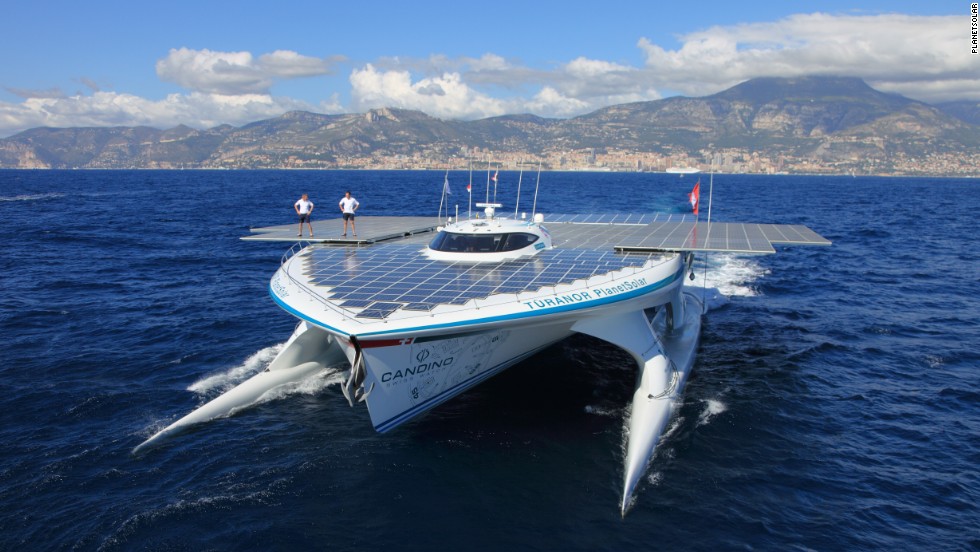
Designed by Lade AS, the Oslo-based company says the hybrid merchant ship -- which would still have an liquefied natural gas-powered engine -- could achieve fuel savings of 60% and reduce emissions by 80%.
It's the brainchild of Terje Lade, who used his skills as a speed sailor to develop his aerodynamic design. He says the futuristic container ship works more like an airplane than a conventional sailing ship.
He said: "In the era of Christopher Columbus, for example, he would have used what became known as trade winds but his ship was quite different from the VindSkip because he would have been sailing with the wind -- he couldn't sail into the wind.
"VindSkip can almost sail into the wind; in this way it's more like an airplane".
"It uses apparent wind, or the sail wind, to generate pull in much the same way that an airplane will take off when it reaches a certain speed."
The ship would be able to point as high as 18 degrees into the wind, the vacuum created on the lee side of the vessel (the side sheltered from the wind) enough to propel the ship forward.
It's the brainchild of Terje Lade, who used his skills as a speed sailor to develop his aerodynamic design. He says the futuristic container ship works more like an airplane than a conventional sailing ship.
He said: "In the era of Christopher Columbus, for example, he would have used what became known as trade winds but his ship was quite different from the VindSkip because he would have been sailing with the wind -- he couldn't sail into the wind.
"VindSkip can almost sail into the wind; in this way it's more like an airplane".
"It uses apparent wind, or the sail wind, to generate pull in much the same way that an airplane will take off when it reaches a certain speed."
The ship would be able to point as high as 18 degrees into the wind, the vacuum created on the lee side of the vessel (the side sheltered from the wind) enough to propel the ship forward.

Computers critical
Critical to the design is computer software being developed by Germany's Fraunhofer Center for Maritime Logistics and Services, which calculates the optimal sailing route based on the weather and prevailing winds.
"With this software, you input when you want to leave and when you want to arrive, the weather forecast is loaded into the program and then it calculates the best route," Lade said.
"This would be dynamically updated every day. At each waypoint it would check with the time arrival and tell the crew whether to speed up using the engines or slow down; it makes it very easy for the crew."
The algorithms in the software also calculate the best angle to the wind to gain the maximum performance from the design.
"With our weather routing module the best route can be calculated in order to consume as little fuel as possible. As a result costs are reduced. After all, bunker (ship fuel oil) expenses account for the largest part of the total costs in the shipping industry," said Laura Walther, researcher at CML in Hamburg.
Sulfur -- the game changer
Changes to regulations in the sulfur content of marine heavy fuels are set to make the price of bunker fuel -- typically among the heaviest and dirtiest of fuels in the distillation process -- more expensive.
Shippers traditionally favored polluting residual bunker fuels because they were cheap, with large ships having the space to transport the pre-heaters necessary to make the fuel volatile.
But all that is about to change.
Current international regulations cap sulfur content at 3.5% but this is expected to drop to 0.5% by 2020.
"This makes things quite dramatic," said Lade. "There are not many good solutions to this. At the moment they can wash the exhaust with scrubbers but on big ships this is very complex and very expensive".
"This is where the 'Vindskip' comes in -- due to the low fuel consumption it can run on LNG which means there is no sulfur at all."
One of Norway's biggest shipowners, Wilhelmsen, has already entered the project on a technical basis and, while Lade is quietly confident the world's first Vindskip will slip into the water by 2019, he says the global shipping industry had been slow to respond to his design.
"(But) the big driving force in the Vindskip project will be these new regulations on sulfur levels," Lade said.
"The big problem with sulfur is that it acidifies the sea and this means that shrimps and crabs can't form their shells," said Lade, adding that acidification was impacting the entire marine ecosystem. "It's very bad. Something has to be done -- it can't go on this way."
Critical to the design is computer software being developed by Germany's Fraunhofer Center for Maritime Logistics and Services, which calculates the optimal sailing route based on the weather and prevailing winds.
"With this software, you input when you want to leave and when you want to arrive, the weather forecast is loaded into the program and then it calculates the best route," Lade said.
"This would be dynamically updated every day. At each waypoint it would check with the time arrival and tell the crew whether to speed up using the engines or slow down; it makes it very easy for the crew."
The algorithms in the software also calculate the best angle to the wind to gain the maximum performance from the design.
"With our weather routing module the best route can be calculated in order to consume as little fuel as possible. As a result costs are reduced. After all, bunker (ship fuel oil) expenses account for the largest part of the total costs in the shipping industry," said Laura Walther, researcher at CML in Hamburg.
Sulfur -- the game changer
Changes to regulations in the sulfur content of marine heavy fuels are set to make the price of bunker fuel -- typically among the heaviest and dirtiest of fuels in the distillation process -- more expensive.
Shippers traditionally favored polluting residual bunker fuels because they were cheap, with large ships having the space to transport the pre-heaters necessary to make the fuel volatile.
But all that is about to change.
Current international regulations cap sulfur content at 3.5% but this is expected to drop to 0.5% by 2020.
"This makes things quite dramatic," said Lade. "There are not many good solutions to this. At the moment they can wash the exhaust with scrubbers but on big ships this is very complex and very expensive".
"This is where the 'Vindskip' comes in -- due to the low fuel consumption it can run on LNG which means there is no sulfur at all."
One of Norway's biggest shipowners, Wilhelmsen, has already entered the project on a technical basis and, while Lade is quietly confident the world's first Vindskip will slip into the water by 2019, he says the global shipping industry had been slow to respond to his design.
"(But) the big driving force in the Vindskip project will be these new regulations on sulfur levels," Lade said.
"The big problem with sulfur is that it acidifies the sea and this means that shrimps and crabs can't form their shells," said Lade, adding that acidification was impacting the entire marine ecosystem. "It's very bad. Something has to be done -- it can't go on this way."
The Danish shipping line Maersk told that it was pursuing innovations in energy efficiency as a solution in the "here and now."
"In general, we do not believe that wind-assisted designs will play any significant role within the container shipping industry in the foreseeable future," said Maersk head of sustainability Signe Bruun Jensen.
"The technology remains unproven at both commercial and operational scale."
She said that Maersk was developing its Triple-E vessels which used ultra-long stroke engines, efficient vessel shape and advanced waste heat recovery systems to improve CO2 efficiency by 50% per container.
"If you look at the technology already on-board our vessels today, it's remarkable just how far we've come," she said.
"In general, we do not believe that wind-assisted designs will play any significant role within the container shipping industry in the foreseeable future," said Maersk head of sustainability Signe Bruun Jensen.
"The technology remains unproven at both commercial and operational scale."
She said that Maersk was developing its Triple-E vessels which used ultra-long stroke engines, efficient vessel shape and advanced waste heat recovery systems to improve CO2 efficiency by 50% per container.
"If you look at the technology already on-board our vessels today, it's remarkable just how far we've come," she said.

No comments:
Post a Comment
Note: Only a member of this blog may post a comment.